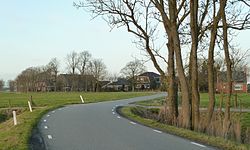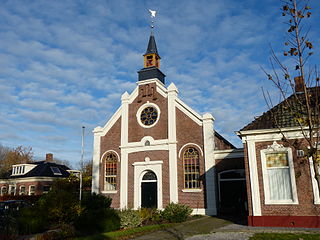
Ten Boer is a village and a former municipality in the northeastern Netherlands, in the province of Groningen. The municipality had a population of in 2019; the village of Ten Boer has approximately 4,600 inhabitants. In 2019, it was merged into municipality of Groningen.

Rottum is a small village on an artificial dwelling hill between Kantens and Usquert in the municipality of Het Hogeland, falling under the province Groningen in the Netherlands. It had a population of around 85 in January 2017.
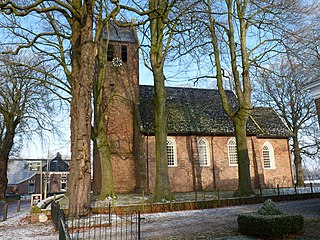
Noordlaren is a village in the municipality of Groningen in the Dutch province of Groningen. It had a population of around 545 in 2021.

Norg is a village in the northeastern Netherlands. It is located in the municipality of Noordenveld, Drenthe. It used to be an independent municipality until 1998. Norg is home to two windmills.
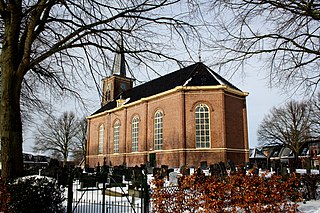
Koudum is a village in the northern Netherlands. It is located in Súdwest-Fryslân, Friesland. Nearby villages include Molkwerum to the west, Workum to the north and Hemelum to the south. The population of Koudum was 2,700 in 2019. The nearest train station is the Koudum-Molkwerum railway station.

Termunten is a village in the Dutch province of Groningen. It is a part of the municipality of Eemsdelta, and lies about 33 km east of Groningen.

Wagenborgen is a village in the Dutch province of Groningen. It is a part of the municipality of Eemsdelta, and lies about 25 km east of Groningen.

Spijk is a village in the Dutch province of Groningen. It is a part of the municipality of Eemsdelta, and lies about 26 kilometres (16 mi) northeast of Groningen. Spijk is a radial terp village from 600-700 BC where the original structure is still clearly visible.
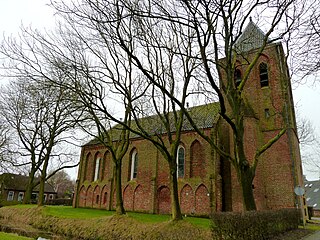
Krewerd is a village with a population of around 75 in the municipality of Eemsdelta in the province of Groningen in the Netherlands. The medieval village church houses a gothic organ from 1531, which is still largely in its original state.

Kloosterburen is a village in the Dutch province of Groningen. It is located in the municipality of het Hogeland. The village developed around a monastry. Kloosterburen was a separate municipality until 1990, when it was merged with Leens, Ulrum and Eenrum. During the combining of the four municipalities they were called 'de LEUK gemeenten'. In 2019, it became part of Het Hogeland.

Nieuwe Pekela is a village in the Dutch province of Groningen. It is located in the municipality of Pekela, about 7 km southeast of Veendam. The village started as a peat colony, and was named after the river Pekel A. During the 19th century, the village was active in the maritime trade, and contains a museum dedicated to the maritime history. In December 1969, the first women strike of the Netherlands occurred in Nieuwe Pekela.

Noorddijk is a village in the Dutch province of Groningen. It is located in the municipality of Groningen, about 5 km northeast of the city centre.

Hantum is a village in Noardeast-Fryslân in the province of Friesland, the Netherlands. It had a population of around 404 in January 2017. Before 2019, the village was part of the Dongeradeel municipality.

Paesens is a village in Noardeast-Fryslân in the province of Friesland, the Netherlands. It has a population of around 242 in January 2017. Before 2019, the village was part of the Dongeradeel municipality.

Gerkesklooster is a village in Achtkarspelen in the province of Friesland, the Netherlands.

Onderdendam is a village in Het Hogeland municipality in the province of Groningen, the Netherlands. It had a population of around 600 in January 2017.
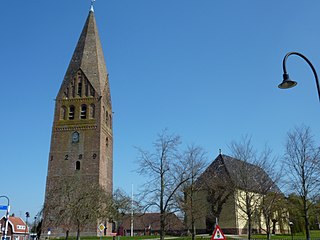
Schildwolde is a village in the Dutch province of Groningen. It is part of the municipality of Midden-Groningen. It is known for its detached church tower from the 13th century.

Garrelsweer is a village in the Dutch province of Groningen. It is a part of the municipality of Eemsdelta.

Engelbert is a village in the Dutch province of Groningen. It is a part of the municipality of Groningen.

Ten Post is a village in the Dutch province of Groningen. It is part of the municipality of Groningen. The village is located along the Damsterdiep and about 14 kilometres (8.7 mi) from Groningen.
